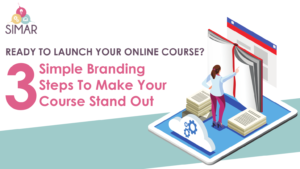Discovery calls are an essential part of the lead generation process. However, a lot of salespeople get it wrong. Executing a perfect discovery call depends mostly on your ability to make your discovery call a conversation rather than a pitch. Most salespersons rush into discovery calls trying to pitch the numerous features they have to attract new customers.
However, what generally happens with this tactic is a low conversion rate. Most clients just get bombarded with excessive information and eventually lose interest in the conversation. The worst thing a salesperson could do is rush through a pitch and finish off with only one question of intent.
More often than not, the client’s answer would be no. Such a salesperson had thrown a lot of mud on the wall and hoped that something stuck to the client’s mind.
Execute a Perfect Discovery Call
Discovery calls aren’t supposed to be mass impact tools. Instead, they should design carefully and target specific clients, and flexible enough to solve their particular problems. Here are a few tips on how to make the perfect discovery call and increase your conversion rate.
Research and Preparation
The first tip is research and preparation; this is about what you do before you even pick up the phone and make the call. It isn’t fair for your clients to waste their time.
You might not know everything about their business, but you must have researched their brand and the industry they are operating. You must know somethings specific to their business and make them feel comfortable with you.
Although a large part of discovery calls involve asking questions, you must not come off as clueless. The key is to prove to your client that you have useful knowledge, skills, and intelligence on their business and industry. An easy way to do this is to ask questions by using industry-relevant keywords. That way, you are learning about their business while making a good impression on your clients.
Opening Questions/ Rapport
This part of the discovery call sets the tone of the conversation and profoundly influences your success level. During this stage, your goal is to get the customer to feel relaxed and control the conversation. One crucial question is if they have the time and are in the right mood for a business discussion. Their response would help you decide how much time you have for the call and adjust the conversation accordingly. If the client’s time is too short, you should consider postponing and fixing a later date or time.
Give Overview
Once you have figured how much time your client would be comfortable discussing with you, the next step is to give your client an overview of the conversation. You must carefully spell out the general goals and objectives of the exchange.
Your client must have a general idea of what they would gain from spending the next thirty minutes or more of their time talking to you.
An example of a good goal is; Figuring out what aspect of your business we can help you. Or How can we help you push up your conversion rate on your website?
Although a generic open-ended goal is right to open up possibilities for the conversation to flow in the right direction, a company-specific question is bound to bring in more success.
Pinpoint(Diagnosis) and Prescribe
This part of the discovery call is the bulk of the conversation. However, although the process seems to be segments of the same thing, they are not. It is unwise to prescribe while pinpointing your client’s problems. The best way to go about landing a new client is to identify their problem before prescribing altogether.
A lot of salespersons give some preliminary prescriptions during the pinpoint phase. While this would keep your clients interested and provide them with the feeling of working with you on a solution that works, it might also give your clients the impression that you don’t fully understand the problem.
The best way to go about this stage of the discovery call is to ask many questions and summarize the answers to your clients. In this way, we can assure them that you are listening and keep the conversation interesting. At the end of the problem pinpointing and conceptualization phase, you should have a master plan or feature ready to offer your client.
If you had gained a clear understanding of their pain points, you would have no problem explaining why the feature you are offering them is the perfect solution.
Ideally, your client should perceive your prescription as spot-on and precise, not a guess or a possible fit. With a clear understanding of the problems your clients are facing, you would be able to prescribe a solution that fits their business entirely.
Conclusion
The process of executing the right discovery call can be divided into four(4); Research, Rapport, Diagnosis, and prescription. The above tips would help you accomplish each of these processes flawlessly and increase your clientele seamlessly.








